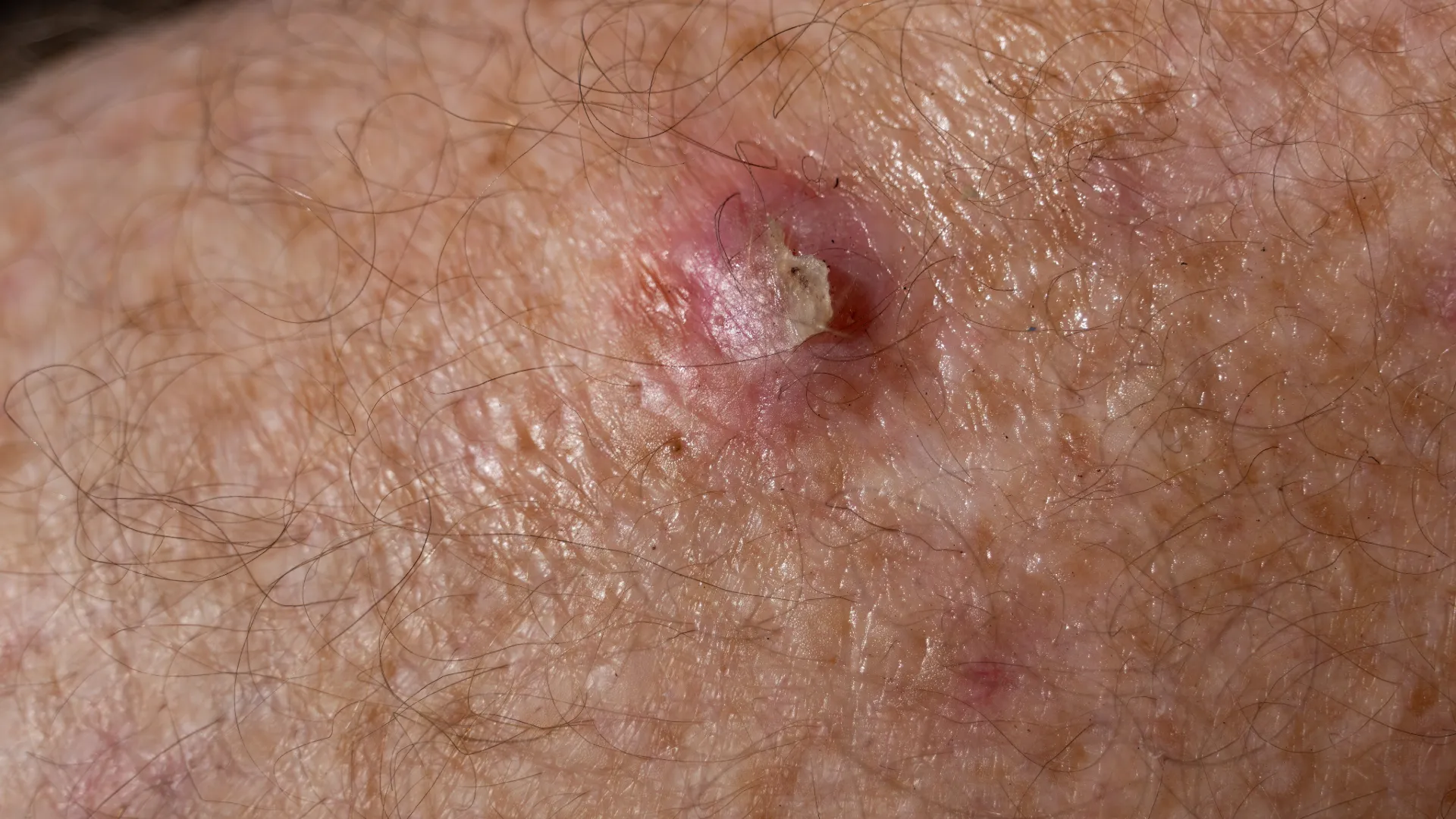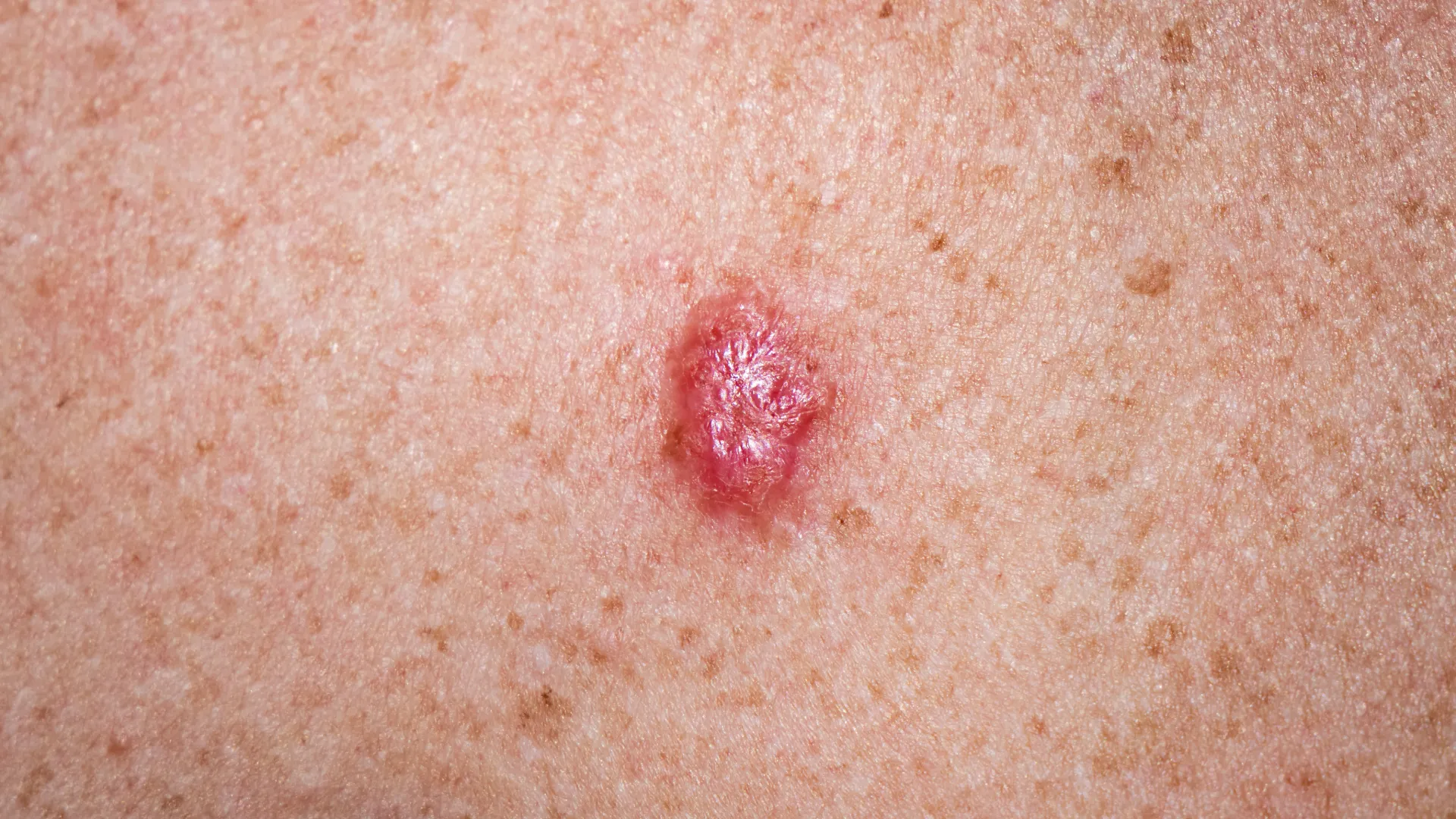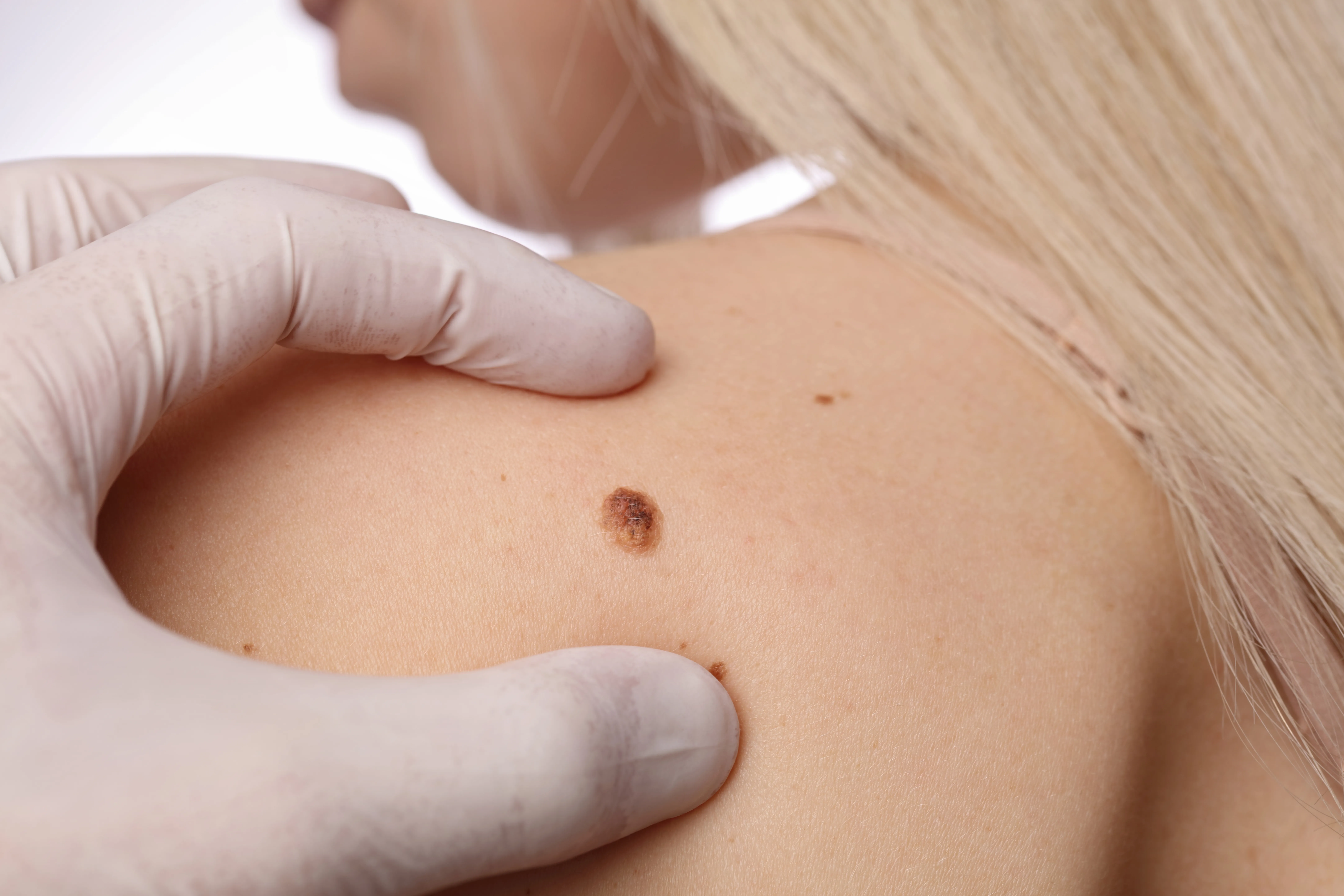Squamous Cell Carcinoma (SCC)
Squamous cell carcinoma (SCC) is the second most common type of skin cancer, arising from the keratinocytes in the skin or mucous membranes. It is a malignant tumor that has the potential to spread locally and even metastasize to distant areas. The lifetime risk of developing SCC is estimated to be between 5-15%, and the condition is more frequently diagnosed in individuals over the age of 50, with the highest incidence in fair-skinned people who are more prone to sunburn.
Common sites of SCC
Squamous cell carcinoma can occur in any area of the skin, as well as mucosal surfaces like the mouth and genital regions. However, it is most commonly found in sun-exposed areas such as the face, ears, lower lip, scalp (especially in individuals with hair loss), neck and extremities. Studies suggest that approximately 80% of SCCs in women and 90% in men occur on the head, neck and hands. The most common site for mucosal SCC is the lower lip, which is particularly vulnerable to ultraviolet (UV) damage.
Risk factors
The development of SCC is primarily influenced by long-term sun exposure and the associated harmful effects of ultraviolet radiation. Other key risk factors include:
Fair skin
Individuals with light skin, freckles, red or blonde hair, and blue or green eyes are at a higher risk.
Sun exposure
Prolonged, unprotected exposure to sunlight, particularly for people whose professions keep them outdoors (e.g., construction workers, farmers, sailors).
Age
The risk of developing SCC increases with age due to the cumulative effect of UV radiation over time.
Chronic skin conditions
Skin conditions such as actinic keratosis, chronic inflammation, and burns increase the likelihood of SCC development.
Human Papillomavirus (HPV)
Infection with high-risk HPV types is a significant risk factor, especially in mucosal SCC.
Immunosuppression
People who are immunocompromised, such as organ transplant recipients, are at a higher risk.
Smoking and artificial tanning
Smoking and frequent use of tanning beds also contribute to the risk.
Clinical appearance of SCC
Squamous cell carcinoma often presents as a persistent, scaly, or rough patch of skin, which may develop into a raised bump or an ulcerated lesion.
It may appear as an ulcer with raised borders or a persistent, crusted wound that can bleed.
It can be either painless or mildly painful, with some lesions being tender to the touch.
SCC usually starts in an area of pre-existing skin damage or actinic keratosis (a precursor lesion) and can grow rapidly, invading deeper tissues.
If left untreated, SCC can penetrate the skin layers and metastasize to lymph nodes and other parts of the body, distinguishing it from less aggressive skin cancers like basal cell carcinoma (BCC).
Treatment
SCC is an aggressive form of skin cancer, and early intervention is critical for a favorable outcome. The main treatment options include:
Surgical excision
The tumor is surgically removed with clear margins of healthy tissue, and the specimen is sent for biopsy to ensure complete excision.
Cryosurgery
Cryosurgery uses liquid nitrogen to freeze and destroy the cancerous tissue, typically for smaller, superficial lesions.
Mohs micrographic surgery
A highly specialized technique used for SCCs in critical areas like the face. This method ensures complete removal while preserving healthy tissue.
Radiation therapy
Used when the tumor cannot be removed surgically or when SCC recurs in areas where surgery is difficult.
Topical chemotherapy
Topical treatment with agents like 5-fluorouracil (5-FU) or imiquimod is used for superficial SCCs or precancerous lesions.
Follow-up and monitoring
After treatment, patients should undergo regular follow-ups to monitor for potential recurrence or metastasis. It is recommended that individuals who have had SCC be monitored for at least 5 years, with biannual checkups. Research has shown that patients treated for SCC are at an increased risk of developing second skin cancers, so ongoing vigilance is crucial.
Prognosis
The prognosis for SCC is generally good when detected early and treated appropriately. While SCC has a higher risk of metastasis than BCC, it still has a high cure rate when managed promptly. Delayed treatment or neglecting follow-up care can lead to significant local tissue destruction and the possibility of spreading to nearby lymph nodes or distant organs.
Conclusion
Squamous cell carcinoma (SCC) is a prevalent and potentially aggressive skin cancer that arises from the epidermis or mucosal membranes. It is primarily caused by UV exposure but can also be influenced by genetic factors, chronic skin conditions and certain lifestyle choices like smoking or tanning. Early detection, proper treatment and regular follow-ups are essential for effective management of SCC and for reducing the risk of recurrence or metastasis.


